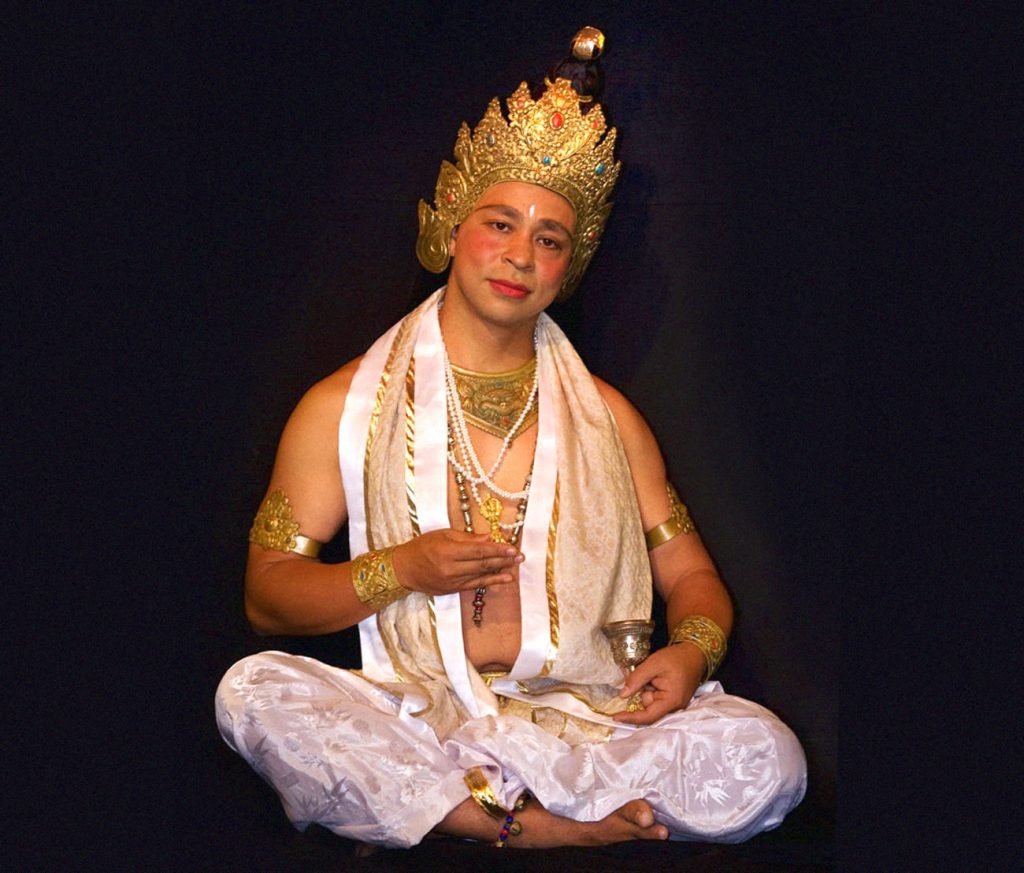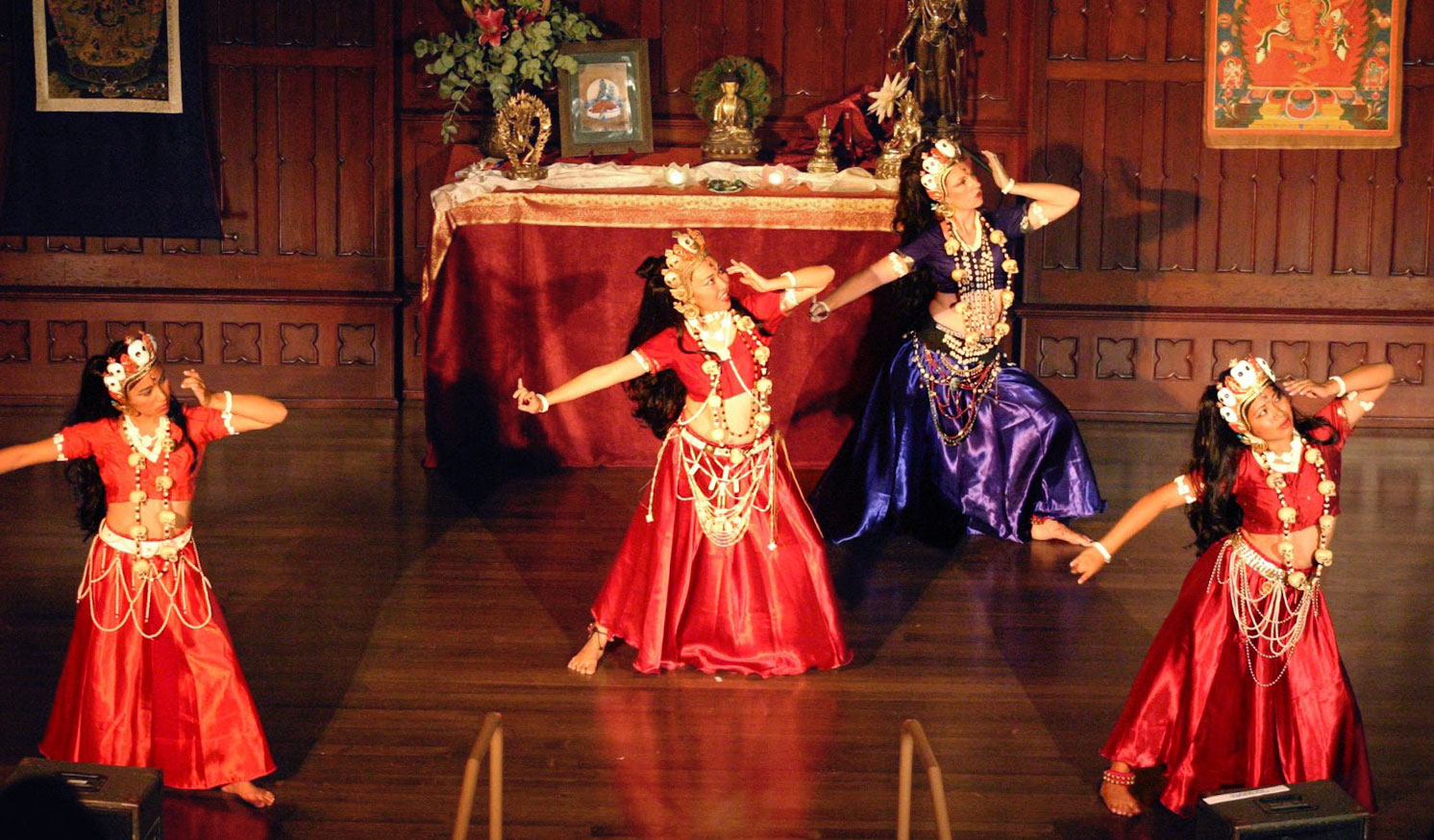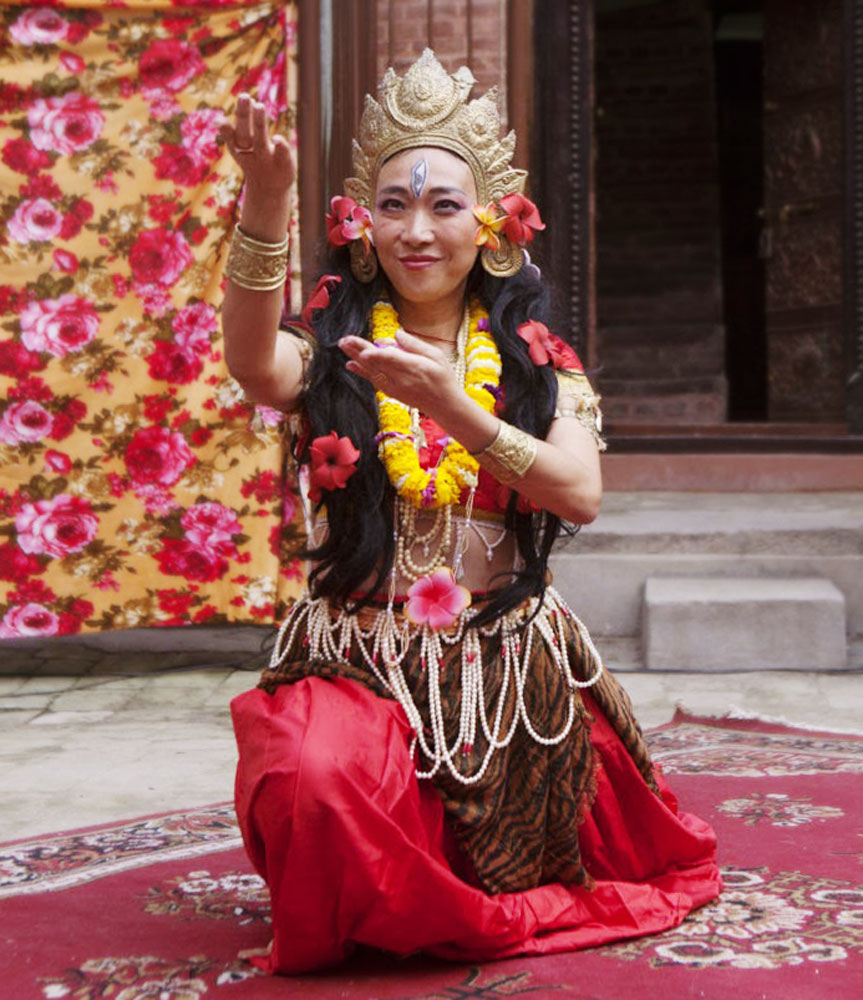Though its history goes back over a thousand years, Charya Nritya, a sacred dance practice belonging to the Newar Buddhists of Nepal, has been in danger of dying out. Younger generations are losing interest, and, as Kathmandu Post arts and culture reporter Srizu Bajracharya explains, community members have historically resisted sharing this central practice of their Nepalese Vajrayana tradition. In the West, Newar Buddhism itself, let alone this specific dance practice, receives little attention relative to other traditions.
Prajwal Vajracharya, a 35th-generation Vajrayana priest, is working to change that. Prajwal began his training in Charya Nritya at eight years old under the tutelage of his father, Buddhist scholar and ritual master Ratna Kaji Vajracharya. In 1996, he founded Dance Mandal: Foundation for Sacred Buddhist Arts of Nepal, based in Portland, Oregon, and in 2009, he opened Nritya Mandala Mahavihara, the first Newar temple in the West. I recently sat down with Prajwal to learn more about Newar Buddhism, the sacred art of Charya Nritya, and the importance of physical movement for Buddhist practice.
Could you tell us a little about who the Newar people are? The Newar people have been living for thousands of years in the Kathmandu Valley, which is the center of Nepal. Our history goes back 5,000 years. Nepal is a Hindu kingdom. If you go to the government, none of the Buddhists are in parliament; it is run by Hindus. Only five to six percent of the whole of Nepal is Newar. That’s why [Newar] Buddhism is not growing that much there. But our people are strong in their practice of the Vajrayana, or tantric Buddhism. The Newar people are just living quietly and that’s why they are not known in the outside world.
What are some of the things that make Newar Buddhism unique? If you go into Buddhist history, it is only the Newar people that have kept the texts in Sanskrit for a thousand years. So that’s one unique part. The other unique part with Newar Buddhism is the emphasis on equality. In 1953, Buddhists were kicked out of Nepal. All the monks and nuns were being kicked out [by the Hindu government]. Our Buddhist practice became a secret because we were not allowed to practice openly. So we went underground. Newar Buddhists are householders. They keep their own practice in family traditions and then live normal lives. We became lay priests [vajracharya] so we could have an easy time with normal people—we don’t see ourselves as different from other people.
What also seems very unique and special to Newar Buddhism is the storytelling and dance traditions. Back in the old days, get-togethers in the vihara house [temple] would always include Jataka tales, [stories of the Buddha’s past lives, for inspiration. Then there was singing and dancing—every ritual had to have singing and dancing. Newar Buddhists believe that your practice is not only sitting meditation. You have to be connected to the physical body and to move. Once you get physically strong, the mind will be more clear. Sometimes people have a mind that is more clear, but the physical body is in pain and suffering, and it doesn’t work in the practice of the dharma.
Could you explain what Charya Nritya is? Charya means “practice” in Sanskrit. Nritya means “dance” in the present day, but it comes from the word nitya, meaning “daily” or “every day.” So Charya Nritya is “everyday practice.” We call it “dance as a spiritual discipline.” The discipline is keeping the awareness so what you are doing is transformed in your body into complete awareness. Every gesture in Charya dance is more than just a gesture. It has to be connected to the spirit, iconography, and history. Each gesture has a meaning.
Take the tribangha [posture where the body bends in one direction at the knees, the other direction at the hip, and then the other again at the shoulders and neck]. The posture is connected to three different nadi chakras. So when you blend movement together, it comes into the central channel. There is a 1-2-4 step we have in Charya dance where we move from one side to the other side with the hip and head. Where the hip is, the head is. When you move the hip and head from one side to the other side, it generates a wave inside. So you can work on the central channel. It’s like a reflexological way of moving in the body. My father says when you become like a Charya dancer, you feel like a different person.
What qualifies someone to be a student of Charya dance? Anyone can be a Charya dancer. You can sit in a chair and be qualified for Charya dance. It’s about joyfully dancing and the energy and it can be easily done.
So if people read this interview and then decide they would like to learn Charya dance, how can they go about doing that? If you have a sangha, I’m happy to teach the dance online. I’m doing that for groups in London and Singapore. And for people living in Portland, Oregon, two or three times a year we usually have a weekend retreat. From 8:00 a.m. to 8:00 p.m., Friday to Sunday, we practice, practice, practice and focus only on one deity dance. But with the pandemic, it’s not happening right now.
***
Weekend retreats may be on pause, but Nritya Mandala Mahavihara and Prajwal himself host regular courses and events, online and in-person. Prajwal just wrapped up a four-week online dance course. Recordings are available here. Every Wednesday at 6:30 p.m. PST, the temple hosts a sadhana (spiritual practice) and bhajan (devotional song) practice, and on Friday at 8 p.m. PST, Prajwal leads a singing practice where participants learn the songs of Charya Dance. There are also larger events, like the upcoming New Year Purification ritual or the Full Moon Namasangiti chant. Last month, the temple celebrated its 12th anniversary with a series of dance offerings. For more information on dance classes, workshops, and lectures, visit the Dance Mandal’s website.
The 12th-anniversary celebration for the Nritya Mandala Mahavihara
Thank you for subscribing to Tricycle! As a nonprofit, we depend on readers like you to keep Buddhist teachings and practices widely available.




